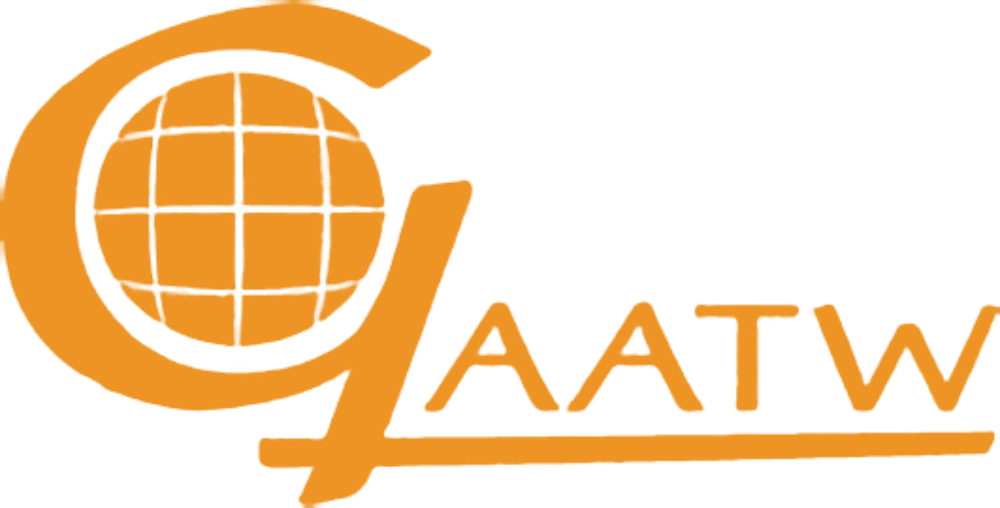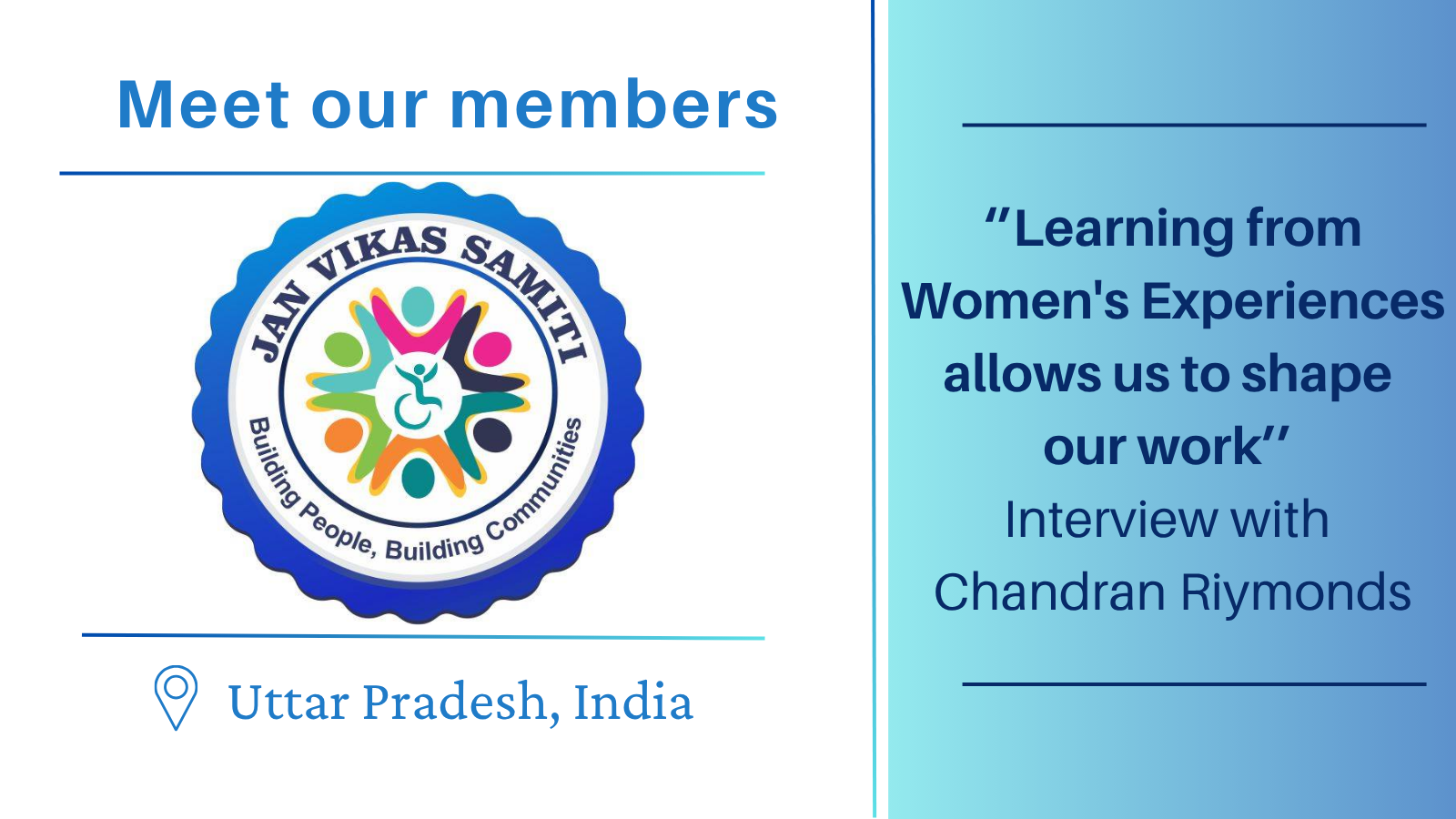Jan Vikas Samiti, one of GAATW’s newest members in India, has long worked toward the development of marginalised communities - especially women, children, and persons with disabilities. In May 2025, Vivian Cartagena from the GAATW Secretariat spoke with the Executive Director, Mr. Chandran Riymonds to learn more about their journey and hopes for inter-regional collaboration.
Vivian: Thank you, Chandran, for joining us today. Jan Vikas Samiti has joined GAATW in January this year. We would like to know how and why was Jan Vikas Samiti founded? What were the reasons behind its establishment?
Chandran: I’m Chandran Riymonds, the Executive Director of Jan Vikas Samiti. I took up this role seven years ago, in June 2018. For about four years now, I have also been the Secretary of the organisation. Jan Vikas Samiti was founded in 1996 but got registered in 1998 under the Societies Registration Act 1860 of the government of India. Since then, Jan Vikas Samiti has been working on various issues and concerns that are affecting the people, especially women , children, persons with disabilities and marginalized communities.
Our first programme started in 2001 with the focus on literacy and community health awareness. . Back in 1996, the literacy rate was very poor,especially among women. Low literacy rates were common in northern states like Uttar Pradesh and Bihar. Given the challenge of widespread illiteracy, our founders prioritized literacy as the foundation of empowerment. They believed that without the ability to read and write, people could not advance or fully engage in society. This concern led them to establish literacy programmes, recognizing education as the essential first step towards personal and community progress.
Our other focus was on health awareness. One of the major challenges then was people’s belief in superstitious practices about health. It was rampant those days. For example, if a child was underweight at birth, people believed that an evil eye had cast its shadow on the child. Also, there was superstition surrounding a pregnant woman losing her child. If a child fell sick, the family would approach an Ojha baba then take the child to a doctor for treatment. Superstitious beliefs had such a strong hold over people that they would often not go to doctors, nurses and health professionals for assistance. These situations motivated and encouraged the founders to start JVS , with the focus on education and health.

Women’s empowerment encompasses many dimensions, including literacy and health awareness. For us, teaching women to read and write is a key focus, enabling them to access knowledge and make informed decisions. It also involves raising awareness about health and hygiene, addressing superstitious beliefs and understanding their impact on families. The founders strongly believed that by promoting education and health consciousness, women can overcome harmful traditions and improve their lives and communities. The founders envisioned an inclusive and humane society, based on justice, equity, and freedom.
These two initiatives were developed in 2001, but gradually the organization began to engage in other thematic areas as we were able to procure funding from donor agencies.
In addition to women’s empowerment programmes, the organization focused on livelihood programmes in order to make our women productive leading to economic empowerment Now we are directing our attention and programmes towards self-sustainability, and economic independence of our stakeholders
However, community health continues to remain an important thematic area of our work. Issues pertaining to mortality rate, prevention of major illnesses affecting the rural population through mass awareness are different aspects of our community health interventions. We also work in the area of prenatal and postnatal care for ensuring the health and well-being of both the mother and the child throughout pregnancy and after childbirth.
In 2003, we included another thematic area in our work, that is disability and inclusive disability rehabilitation of children and youngsters with disabilities. We started with around thirty-three children and today, we serve about 4600 children and youngsters with disabilities in 12 states of North and Northeast India. We do this programme in collaboration with Liliane Foundation from the Netherlands as its strategic partner organization for north and north-east India.
We also worked on another thematic area - Inclusive Education, especially in the northeast region. There is a big concept of inclusion in the education of children with disabilities. Currently, we don’t have an active project, but we still regard it as an important focus area.
In the Skill Development thematic area, we focus mostly on adolescent girls who drop out before completing high school or secondary school education. We focus on vocational and entrepreneurial skills, making them able to stand on their own.
We have disaster and relief as yet another thematic area . We have served the people during many both human-made and natural disasterFor example, during the COVID-19 pandemic, we stopped our usual work for about six months and solely focused on COVID-19 prevention programmes.
Our target communities include the socially and economically marginalized groups. We started with some 60 self-help groups, and today we work with 810 self-help groups covering over ten thousand women. This has been going on for about 27 years. We work from Varanasi (Northern India), where our head office is, and we have a team of around 195 persons serving the organization. Some are consultants and others are on the payroll.
Vivian: Every time you're planning a project or a programme, how do you incorporate the learning of the people that you have been working with?
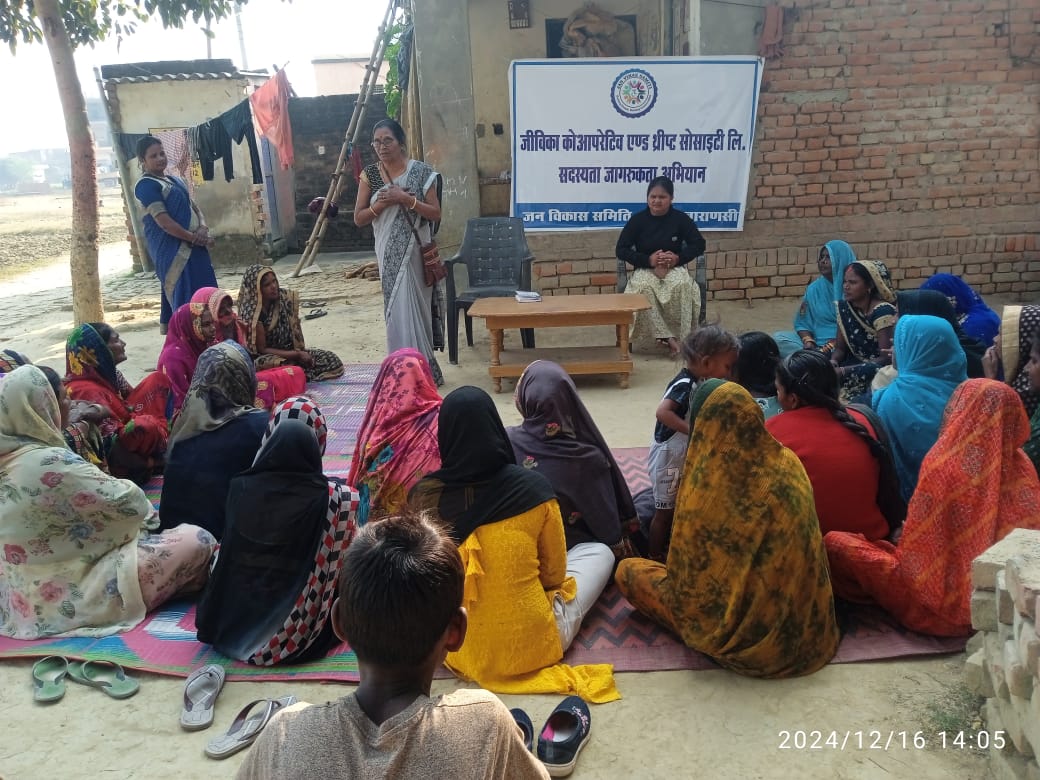
Chandran: Over the past few years, through our extensive experiences including visiting villages, listening to countless stories shared by these groups, and closely following news reports, particularly during the challenging times of the COVID-19 pandemic, we began to notice a significant pattern. We observed that a large number of people, especially from specific regions like Varanasi and Jaunpur, were migrating to bigger cities within India like Delhi, Mumbai, Haryana, and Punjab. When we heard reports during the COVID-19 crisis about people returning to their hometowns, we felt compelled to dig deeper into the reality of this migration. We wanted to understand the true scale of this movement from these particular regions.
To get a clearer picture, we conducted a small sample survey in these areas. What we discovered was a big surprise: in almost every household, nearly every male member, aside from the elderly grandparents or older fathers, was migrating. This was especially true for the younger population, roughly between the ages of 18 and 50, who were leaving their villages to seek opportunities in major cities across the country or even internationally. This finding was a revelation for us and it made us realise that migration, particularly labour migration, was a critical issue that needed attention.
Although Jan Vikas Samiti traditionally focuses on women’s economic empowerment and not specifically on labour issues, this discovery prompted us to reconsider our priorities. We recognised that migration and labour were significant thematic areas that we needed to address. The survey highlighted the scale of the issue, revealing the push and pull factors driving this massive movement of people to urban centres or foreign countries. These factors were clearly shaping the lives of entire communities.
As we dug deeper, engaging directly with the communities, we began to hear compelling and often heartbreaking stories. We learnt about the working conditions these migrants faced in cities or abroad, the challenging living conditions, and the profound impact their absence had on the families left behind, particularly the women. The absence of men in these households created unique challenges for the women, affecting their daily lives.
Based on these insights, we realised the need for a structured intervention to address this issue comprehensively. We are now actively exploring ways to create a proper framework to tackle the challenges of migration, focusing on improving the conditions for migrants and supporting the families, especially the women, who remain in the villages. This is a new focus area for us as we work to address the broader implications of migration and its effects on the communities.
Likewise, through our programme promoting natural and scientific farming practices and techniques we bring together women, who are actively engaged in agricultural activities for greater productivity and effective farming. Our visits to the villages involve regular meetings and gatherings involving rich exchange of information and stories between the women and our team. We gain lessons from these interactions, which forms the basis for our follow up interventions and programmatic directions.
Women participate in exposure programmes, and they acquire new methods and approaches to enhance their agricultural practices. After their return, we maintain regular contact through follow-up meetings to assess how they are applying the knowledge gained from the exposure visits in their own agricultural activities . This on-going process of learning, application, and follow-up shapes everything we do with them.
In our work, we’ve learned, for example, that rural women heavily rely on microfinance institutions for almost every need. In the past, women borrowed from traditional moneylenders who charged them high interest rates, thus making them poorerNow, microfinance institutions have emerged as a structured form of money-lending approved by the government, essentially replacing informal moneylenders. Both the traditional money lenders as well as microfinance institutions are leading the people to poorer conditions..
Through our constant interactions with the women, we tried to understand their needs, how they access microfinancing, the types of loans they take, where they use the funds, and the struggles they face in repaying these loans. These stories and challenges shared by the women pushed us to deeply consider alternatives to help free them from the burdens of microfinance. This led us to propose women’s cooperatives, established under the Cooperative Societies Act of the country. In these cooperatives, women themselves are the members and shareholders. They borrow money, pay interest, and keep the financial system within the cooperative, unlike microfinance where profits often leave the community.
This was a significant learning moment for us. After extensive discussions with the women, we took action to ensure they could live with dignity, respect, and the ability to run their own businesses, care for their children, and access education and housing. As a result, now there are two registered women’s cooperatives, one in Varanasi and the other in Jaunpur. For example, today, a team is visiting villages in Jaunpur and will discuss with women how the cooperatives differ from microfinance and how they can generate more income in the long term. Over the past two years, more than hundred women, have taken small loans from these cooperatives to start various businesses.
This process of analysing the women’s needs and evaluating existing systems, like microfinance, revealed what works and what doesn’t. It led us to develop and implement an alternative system (the cooperatives) that is now actively functioning. This approach shapes our ongoing efforts to empower women and support their economic independence.
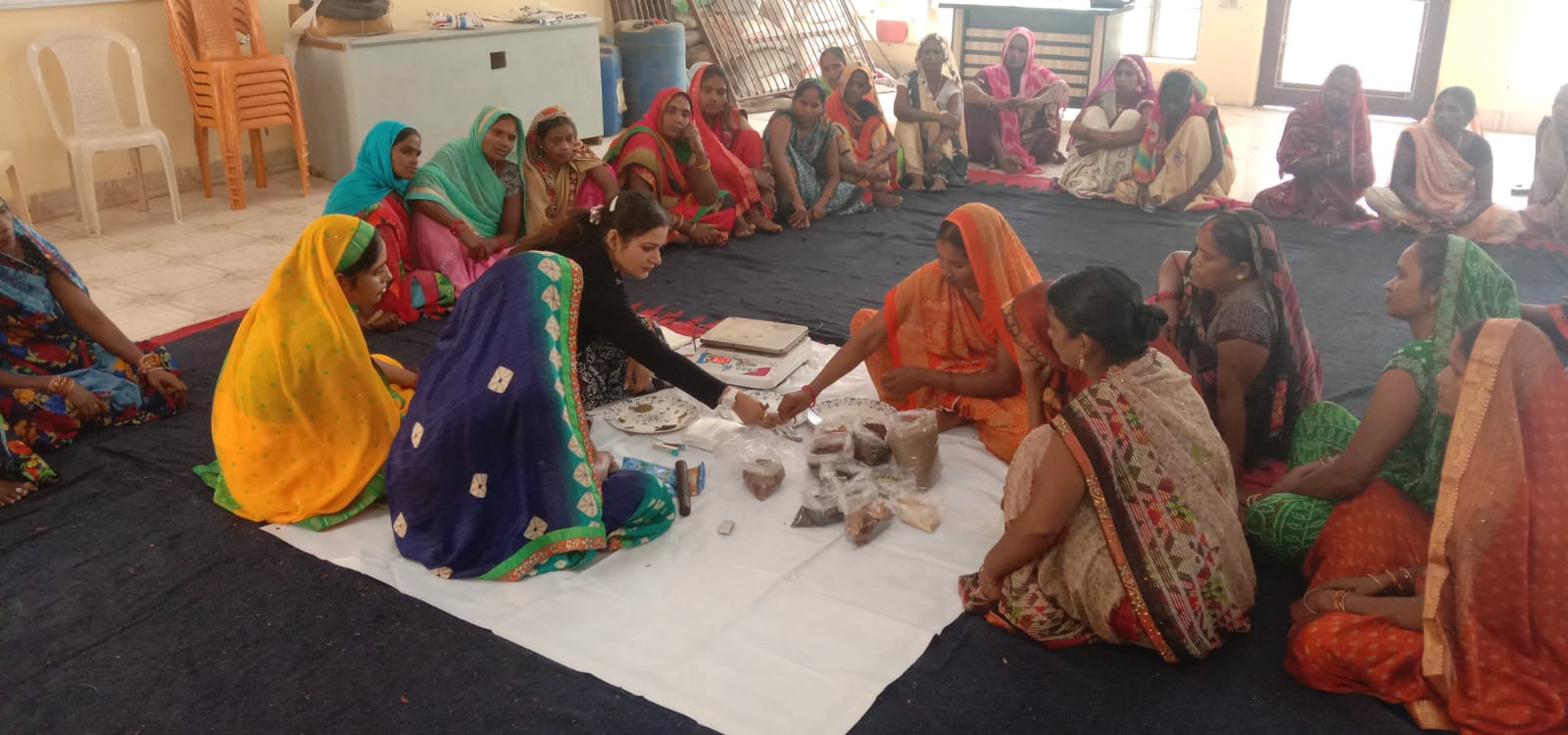
Sometimes we face failures, sometimes successes. For example, many of the women are into different productions of various things. We even considered having our own e-commerce channel to sell these products online and developed one, but it just didn’t work out.
By engaging with the women, listening to their life stories, understanding their struggles, and observing the situations around them, we gain insights that help us develop new approaches and strategies. We discuss these ideas with the women, other community members, and experts, then try them out by launching new initiatives. Some work, some don’t. However, interventions like the women’s cooperatives and farmer producer organisations, for example, have proven to be very successful strategies. When we see potential in an approach, we slowly incorporate it. This process of learning from the women’s experiences, both in their personal contexts and through formalising structures, shapes our efforts and drives our work forward.
Vivian: That has been a very interesting initiative, not only for their livelihood, but for the ability of women to come together and organise. Of course, sometimes there are more failures than successes in the beginning, so in this sense I would like to know which are the biggest challenges that you currently face?
Chandran: One of the most significant challenges in our initiatives, particularly in rural cooperatives established over the past two years, is promoting women's active participation and leadership. Women do engage in training programmes, capacity-building activities, and community gatherings, but their ability to take on leadership roles within cooperatives remains a bit limited. In rural areas, women lack full empowerment, which restricts their ability to dedicate time, travel, or step out of their villages to meet people, network, or persuade others. These barriers impede hinder their exposure to new ideas, their ability to learn and adopt innovative approaches, and their confidence to lead independently from our team.
While women remain part of the movement, their ability to take responsibility and drive these initiatives on their own is still a big challenge. We’re working on it and efforts are being made to empower women to lead from the front .
Another aspect of our programme is that we have made significant efforts with women to become successful entrepreneurs and effectively market their products in the villages. Initially, we invested heavily in helping them develop entrepreneurial skills and promote household goods, such as washing products, to create sustainable livelihoods. However, we encountered major obstacles in marketing these products. We even tried launching our own e-commerce platform to sell our products, but it didn’t gain momentum and ultimately failed.
We learnt from this experience and shifted our strategy to focus on providing women with financial resources, allowing them to pursue opportunities that suit their specific circumstances. For example, some women have chosen to invest in animal husbandry , enabling them to generate daily income through dairy products while managing their households. This approach empowers them to make decisions that align with their needs and gradually improve their lives.
Over the past 27 years we’ve successfully accomplished our main goals, but we’ve reached a point where we need to reassess our direction to remain relevant. Currently, we’re conducting a comprehensive needs assessment to evaluate where we stand and where we go to This process is critical because we’ve noticed that our established approaches and expertise in certain areas may have reached a saturation point. This assessment will likely guide us towards new strategies and priorities, ensuring our programmes remain impactful. Embracing this openness to change is both a challenge and an opportunity, as it requires us to step back, reflect on the changing world, and adapt to better serve our communities.
Vivian: And how do these challenges increase the risks of women and children becoming victims of trafficking or facing dangers during migration?
Chandran: The communities we serve, particularly in nearby rural districts like Jaunpur, face significant challenges due to migration driven by lack of local job opportunities. In Jaunpur, where Bandana recently visited, there are no factories, companies, enterprises or businesses. Agriculture is the only source of income but it’s not reliable. For example, this year’s wheat production was very poor due to weather conditions,
These struggles force people to migrate to support their families, so many travel to nearby cities or even abroad in search of work. This constant movement reflects the economic desperation in these communities, which also increases their vulnerability to trafficking, as people are doing jobs without adequate safeguards. Our organisation is working to address these challenges by promoting local and more sustainable alternatives, but the absence of jobs and reliance on agriculture remain significant barriers for the communities we work with.
On a daily basis, we see men travelling to city each day for work. This daily movement for work is still migration. Even then they often don’t find stable employment in the city. This, combined with unsuccessful agricultural efforts pushes people to consider moving farther, to places like Mumbai, Delhi, Bengaluru, Chennai, or other cities, hoping they might find better work and be able to support their families back home.
We see a lot of this kind of internal migration, especially from rural areas, and mostly among people between 18 and 55 years old. They're moving within the country, often chasing better wages. There's also international migration from certain areas. For example, from Jaunpur, where there's a large Muslim population. Many people from there migrate to countries with Muslim majorities, possibly because they feel they’ll have better job prospects or a more familiar environment. These migrants work in all kinds of informal jobs – as drivers, tailors, factory workers, and so on. So yes, migration is happening on many levels – from village to city, from one state to another, and even across national borders. It’s a widespread and ongoing issue across much of India.
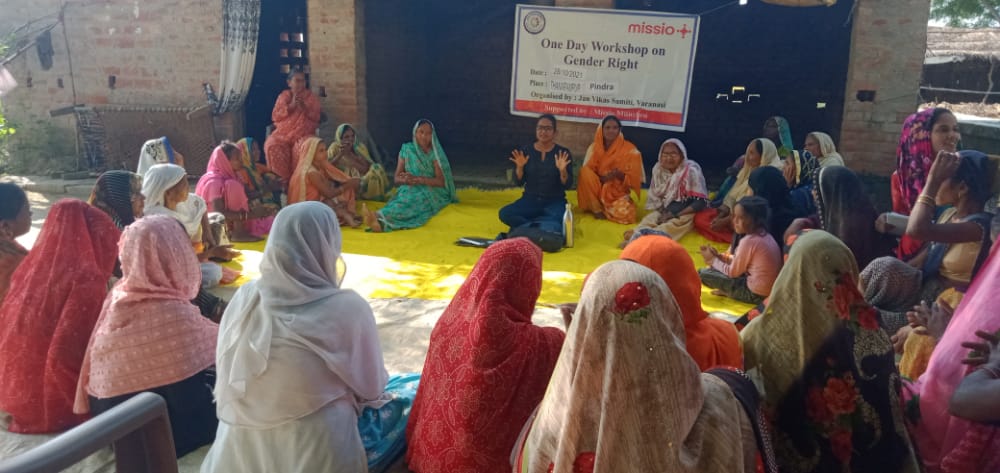
Migration among women in some parts of India is relatively limited, especially in areas where cultural norms restrict their mobility. In this region women typically do not leave their homes because they are expected to manage the household. There are strong social restrictions on their movement. In some communities, women even cover their faces with their saris as part of the traditional dress, symbolising limited visibility and mobility in public spaces.
However, the situation is quite different in other regions, particularly in the north eastern region. These areas are home to many Indigenous or tribal communities, where migration contexts vary. Women from these communities often migrate in large numbers for work, both within India and to more distant locations, as domestic workers, often heading to cities like Delhi, Mumbai, or even to the southern states like Kerala. In some cases, they migrate independently, while some others migrate with their entire family. So, unlike Varanasi for example, women’s migration is quite visible and active in these tribal regions.
In my previous work experienceI have seen that many girls and young women were trafficked either for domestic work or, in some cases, for sexual exploitation. Luckily, there has been growing awareness around these issues in which government programmes have played an important role through rescue operations and prosecution of traffickers.
Nevertheless, trafficking continues in informal ways. For example, a girl working in Delhi might return to her village and bring back a few other girls with her for a commission, often to be exploited by the employer. The parents may not fully understand where their daughter is going or who they will be working for. We have heard many stories of girls initially trafficked for labour who are laterend up in brothels or other exploitative environments where they are sexually abused.
Vivian: Right, they become victims of sexual exploitation.
Chandran: I can say that the number of trafficking cases has significantly decreased. In the region where I’m currently based, trafficking is minimal. One possible reason is that many women still do not leave their homes for work. It could be due to cultural, religious, or social norms. Women often remain within household boundaries, which limits both their mobility and their exposure to risks of trafficking. As a result, we don’t see many cases of women being trafficked or even migrating to cities for work.
But today, in 2025, trafficking is no longer a major issue in this region. Even in states like Jharkhand and other parts of the eastern belt, the scale has decreased . While some particular cases still exist, mostly those involving labour exploitation and to some extent sexual exploitation, it’s no longer at the high levels we saw in the past.
Vivian: That’s been a very comprehensive explanation. Thank you, Chandran. I have just one last question. Since Jan Vikas Samiti has recently joined GAATW, I would love to hear how your organisation feels about becoming a member. What are your expectations, or what do you see as the potential benefits of being part of this alliance?
Chandran: One of the main reasons we felt the need to join and work with GAATW was because of the growing issue of migration that I mentioned before. At Jan Vikas Samiti, we’ve observed that migration, both internal and international, is quite common in our region and we know the underlying causes. While GAATW’s work focuses on women and migration, which aligns with our concerns, we also see that much of the migration happening here appears to be relatively safe. From what we have seen, most people seem to know where they’re going, how much they’ll be earning, and what would be the benefits when they migrate. In many cases, it looks like they’ve gone through a fair and informed process. Of course, there are still a few cases, maybe two or three out of a hundred, where people face exploitation, don’t receive their agreed salaries or work in poor conditions. But overall, it seems that most migrants are receiving their wages, even if the amount isn’t very high.
However, what we saw especially during COVID-19, when people were walking for days just to return home, was a reminder of how vulnerable migrants can be and that’s when we realised that while men are migrating for work, it’s the women who are left behind at home. These women are not migrants themselves, but they are deeply affected by migration. They end up carrying a heavy burden – taking care of the children, managing the household, working in the fields – all on their own, sometimes for months or years while their husbands are away. The women have their own set of challenges, and we’re interested in finding ways to support and organise them.
That’s the potential we saw in partnering with GAATW, that it would help us to find ways to organise and support women from migrant families, to better understand their needs, and to work together on solutions that help them navigate the difficulties they face.
Secondly, since migration, both within the country and abroad, is happening on a large scale in some of the districts here in India, we’ve also started thinking about the risks that men and women might face during their journeys. As I said, while it's mainly men who migrate from our region, we are aware that some women also travel to places like the Gulf countries or the Middle East, often for domestic or other forms of informal work. We don’t have detailed information on this, but we do know there are cases, and potentially many more women may consider migrating in the future, as our team has been able to document. In situations where women face difficulties abroad (whether it’s poor working conditions, abuse, or other violations) we see a role for ourselves in supporting their repatriation and reintegration, and we could even work with the government to help bring them back safely.
At the same time, we believe there’s an important opportunity to prepare women before they migrate, for example, through pre-departure orientation or training programmes that inform them about their rights, what to expect at their destination, and how to protect themselves. This is one of the key areas where we see the value of engaging with GAATW, given its focus on migration and the rights of women migrant workers.
We see the potential for collaboration in areas like rights awareness and cross-border support. While we haven’t launched any major initiatives yet, we’ve taken some initial steps, especially after Bandana’s field visit. We’re exploring ways to build something more concrete. Of course, we recognise that to do this meaningfully and in a more sustainable manner, we’ll need some level of support. Without it, it’s difficult to get started, but we’re hopeful that with the right collaboration, especially through the Women Workers for Change (WW4C) programme, we can begin some focused work together in the near future.

So yes, that’s the value we see in joining a global and recognised alliance like GAATW. We see this as an opportunity for mutual learning, especially inputs we can gain from GAATW and its global network. Hopefully, we can also contribute to the discussions based on our local experiences and past work. This is all part of an ongoing learning process because sometimes things work well, sometimes they don’t, but what’s important is the exchange: learning from each other, sharing openly, and growing together.
That’s really the reason we felt it was valuable to explore membership with GAATW. We’re here, and open to seeing where this journey can take us.
Vivian: Thank you so much, Chandran. At GAATW, we’re always looking to build meaningful partnerships with like-minded organisations, and it’s been a pleasure hearing about the work Jan Vikas Samiti is doing. As I mentioned earlier, we’re also in a moment of reflection and assessment of ourselves by looking back at our past experiences, recognising how the world and its dynamics have shifted, including some funding opportunities and priorities. So, this is also a time for us to reflect on how to continue with our members and restructure where needed. I really appreciate you taking the time to share your insights with us today. I don’t have any questions for now. Would you like to add anything?
Chandran: Yes, I would like to highlight that, as an organisation, we look to the future with hope. Five years from now, we envision the women we work with being in a much stronger position, with sustainable livelihoods, more confidence, and participating actively in women’s movements, especially in the cooperative movement we are building. This is something we are working on with purpose and dedication, putting our energy and efforts into making it a reality.
We are looking forward to the opportunities ahead for collaboration with GAATW, particularly around migration. So, even if trafficking is not a major concern in our current context, migration and labour rights are areas where we can definitely do meaningful work together. We see a lot of potential, especially now with initiatives like Women Workers for Change. It’s a small step, but an important one for us. We are committed, and we look forward to seeing how we can move forward together in the years ahead.
Vivian: Count on that! Thank you so much, Chandran.
